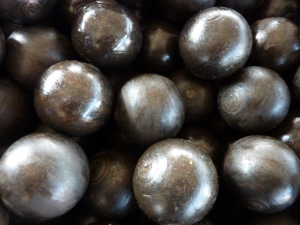Difference between casting steel ball and forging steel ball
Suchuang Machinery Equipment Co., Ltd(http://skewrollingmill.com)
Email: [email protected]
Now the mill steel ball on the market according to the manufacturing process can be divided into two types:casting steel ball and forging steel ball, but the wear degree are not the same. Due to crushing, ball need good wear resistance and sufficient toughness and not breaking ball. According to the manufacturing process and materials, it can be divided into:
1.Casting steel ball: low chromium steel, medium chromium steel, high chromium steel and super high chromium steel (Cr12%-28%).
2.Forging steel ball: low carbon alloy steel, medium carbon alloy steel, high manganese steel and rare earth chromium molybdenum alloy steel ball:
Now which kind of steel ball is the best? Now let’s analysis:
1.High chromium steel quality index: chromium content is more than 10%, the carbon content in 1.80%-3.20% are called high chromium steel, the requirements of the national standard of high chromium ball hardness (HRC) must be ≥ 58, AK ≥ 3.0J/ cm impact value of 2, if the hardness of high chromium high temperature quenching + tempering treatment must be used (there are oil quenching wind, water quenching, quenching solution and other domestic high chromium steel quenching), such as detection of hardness (HRC) below 54 indicates high chromium steel without quenching.
2.Low chromium steel quality index: with 0.5% ~ 2.5%, the carbon content in 1.80%-3.20% are called low chromium steel, the requirements of the national standard low chromium steel hardness (HRC) must be≥ 45, AK ≥ 1.5J/ cm impact value of 2,Rolling Ball in order to ensure the quality of low chromium steel ball high temperature tempering or vibration aging treatment (in order to eliminate casting stress, such as the objective) of steel ball surface is dark red to indicate that the product has been the high temperature tempering treatment, such as the steel ball surface is the metal color indicates the product without tempering.
3.Forged steel ball quality index: with 0.1% ~ 0.5% (forged steel ball without chromium), the carbon content below 1% and the steel ball with high temperature forging manufacturing, some forged steel ball surface hardness (HRC) ≥ 56 (although it can achieve more than quenching layer only 15 mm or so), steel ballbecause of forged steel ball material harden ability core hardness is generally only 30 degrees. Under normal circumstances, forged steel ball by water quenching treatment, the forged steel ball broken rate is high.
4.Comparison of wear resistance: super high chromium steel > high chromium steel > medium chromium steel ball > low chromium steel > forged steel ball.
Elements of wear-resistant steel ball:
Chromium content is 1% – 3% and the hardness HRC ≥ 45. This standard of wear-resistant steel ball is called low chromium alloy cast ball. Low chromium balls adopt the intermediate frequency electric furnace, metal mold or sand casting mode. Its performance is suitable for some metallurgical mines, slag and other industries, which are of low grinding accuracy and low consume.
Wear-resistant steel ball’s chromium content is 4% to 6% and hardness HRC ≥ 47. This standard is called the multi-element alloy balls, which is higher than low chromium steel referring to strength and wear resistance and. Chromium content is 7% – 10% and the hardness HRC ≥ 48 is chromium alloy cast balls, whose performance and other aspects are higher than multiple alloy steel ball high.
Wear-resistant steel ball’s chromium content ≥ 10% – 14% and the hardness HRC ≥ 58. High chromium alloy cast balls is a kind of wear-resistant steel ball with high applicable rate and good cost performance in current market. Its application range is wide and is used in metallurgy, cement, thermal power, flue gas desulfurization, magnetic materials, chemical, coal water slurry pump; ball therefore, superfine powder, slag, fly ash, calcium carbonate and quartz-sand industry. Its function is highlighted especially in the cement industry, which can increase production and reduce energy consumption.










